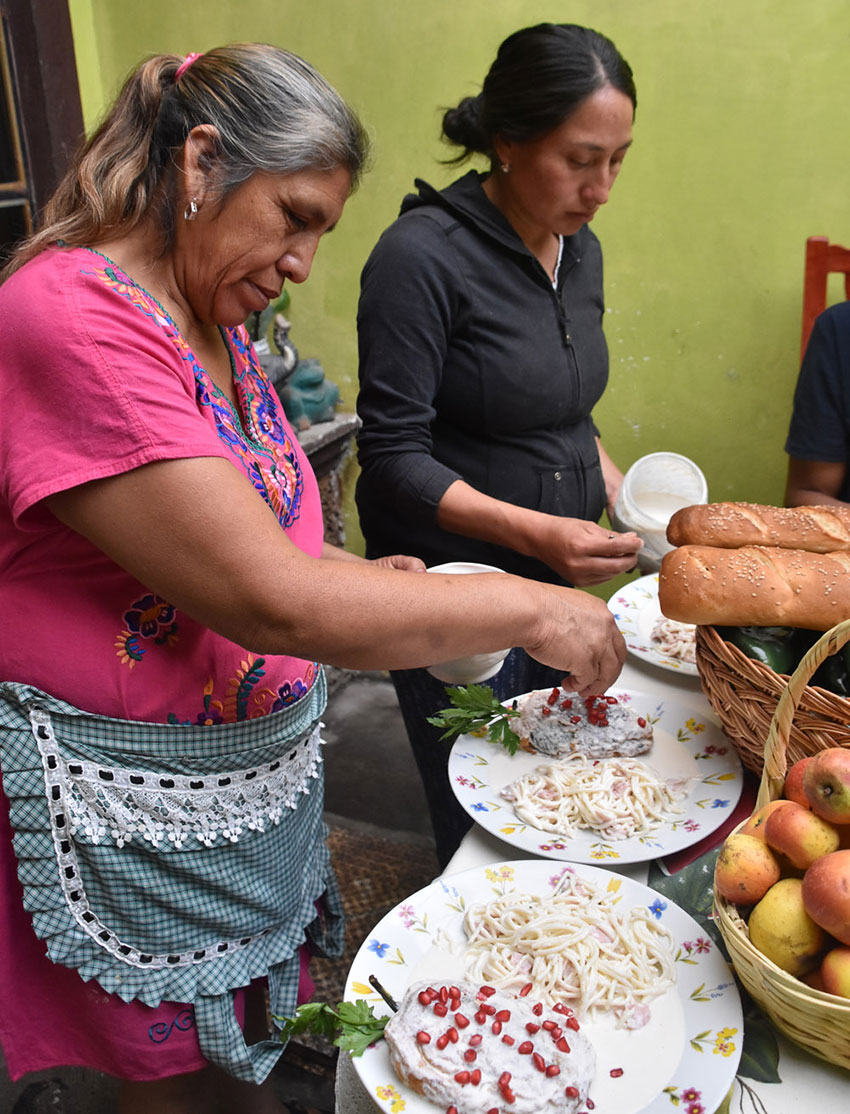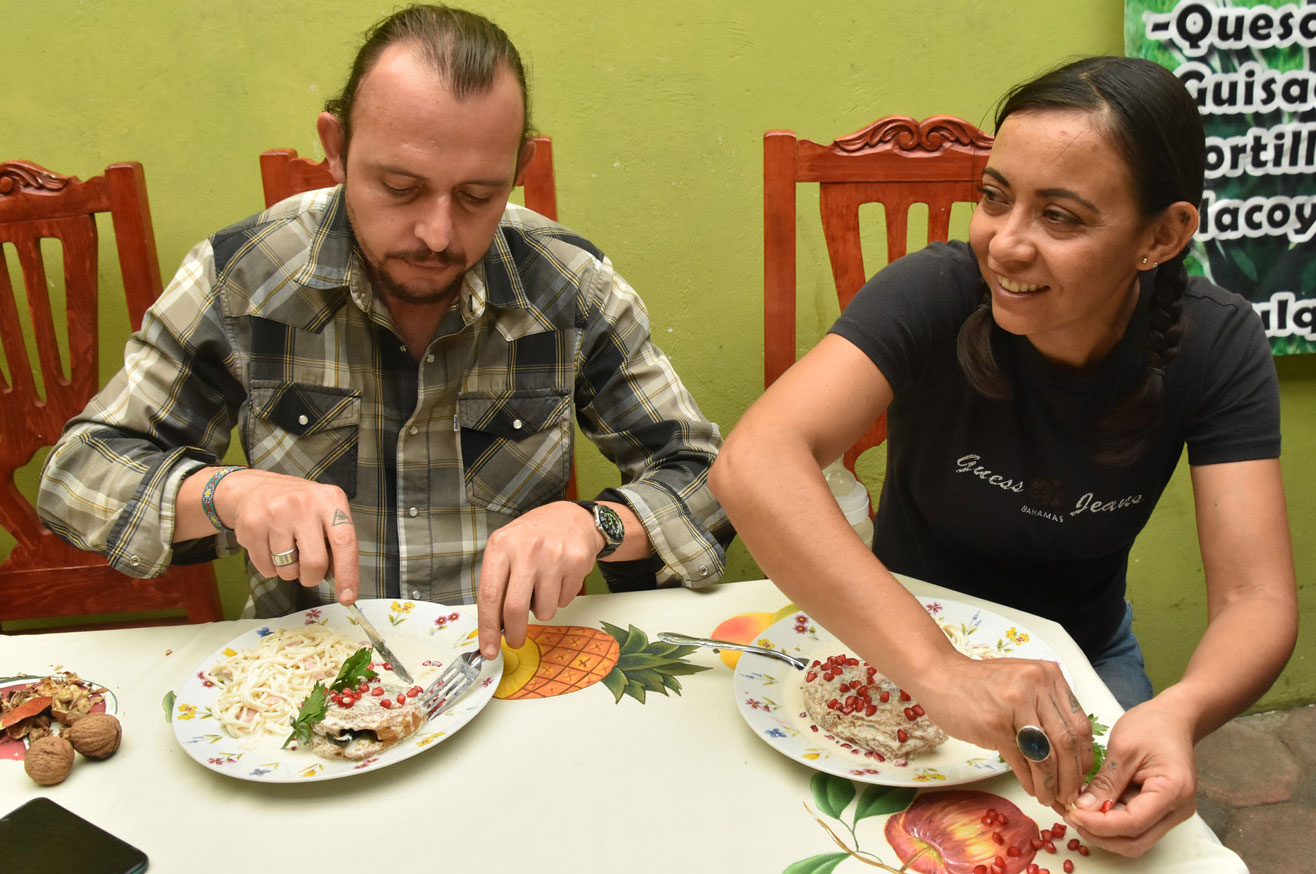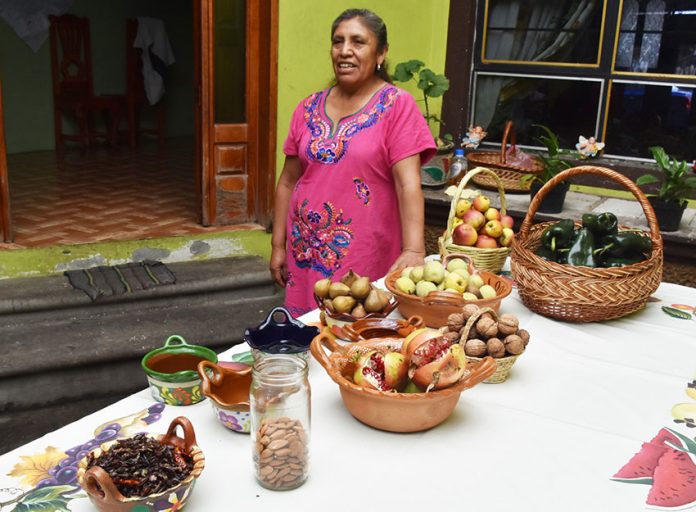In Puebla, the signs and posters advertising chile en nogada typically start appearing outside restaurants and homes in late June and then disappear sometime in October.
The dish is a stuffed poblano chile bathed in a walnut-based cream sauce (the nogada), topped with pomegranate seeds and parsley, imparting to the dish the colors of the Mexican flag. If you haven’t ever tried it, rush out and see if you’re lucky enough to savor this exquisite dish.
Like many traditional dishes in Mexico, chile en nogada’s origin is a little murky. It’s generally accepted that it was first made by nuns in the Santa Mónica convent in Puebla during a celebration of Mexican independence. The recipe they used was one brought from Spain where a similar dish was made but served as a dessert.
It was also initially served as dessert in Mexico but now it’s a main dish, with families and restaurants having their own recipes, recipes that have been handed down through generations. Although most closely associated with Puebla, chile en nogada can now be found in restaurants all across Mexico.
Concepción Fernández of San Pedro Yancuitlalpan stands next to a table filled with the ingredients that will go into her chile en nogada and points them out. “Chile poblano, of course,” she said, “pears, apples, peaches, walnuts, almonds, pine nuts and pomegranates.”

The fruits, she explained, are special ones used for the dish. “Panocheara is an apple that is sweeter than other types, pera lechera is a small pear that is also sweet and combines well with the walnuts, and the peach is durazno criollo that has more flavor.”
Although she said there are vegetarian versions in her pueblo, located in Cholula, Puebla, pork is always added.
“It is popular because it is only available at this season because it is harvest time,” explained her son, Santos Popoca Fernández. “Everything is from our harvest except for the almonds, pine nuts and meat.”
To say the preparation is laborious would be an understatement.
“The fruit must be ripe,” said Guadalupe Jiménez Rincón, Concepción Fernández’s daughter-in-law, who helps with the cooking.
“You must peel the fruit, cut it all up very small and cook it. The walnuts are raw but the almonds and pine nuts are fried. The nuts are then ground and it is all mixed by hand. Finally, the pork is added.”

The most painstaking step is peeling the skin off the walnuts, which is done by hand. “Soaking them first helps,” she explained. The walnuts are fresh and, once the bitter-tasting skin is removed, have a very mild flavor.
The sauce is made with walnuts, queso fresco, Philadelphia cream cheese and, said Fernández, “a little milk to thin it out.”
She insists on using charcoal to roast the chiles. “Everything with carbon has a better flavor,” she said. Once the skins have blistered, she places the chiles in a bag for about 15 minutes, then peels them and removes the seeds. Finally, she stuffs them with the mixture, places them in hot oil and smothers them with beaten egg whites.
The frying only takes a few minutes after which she ladles on the nogada, sprinkles the chiles with pomegranate seeds and tops them with a couple of sprigs of parsley.
Fernández has been selling chile en nogada from her small home for about 20 years. “Before we made it only for our family,” she said. She figures she sells about 400 for the season at 150 pesos (about US $7) each.
She serves them with bread. “We always eat chiles with bread,” said Santos. It’s a particularly good idea with chile en nogada because you’ll want to sop up every bit of that sauce.

César Galeazzi and Zuri Merlo sat at the small table in Fernández home, enjoying the chiles. Preparing their meal — peeling, chopping and cooking the fruit and nuts — took two whole days. Mixing the ingredients took another hour.
When Galeazzi was asked what he thought about the time it took to prepare the meal, he didn’t hesitate. “Vale la pena,” he said. “Claro que sí.” It is worth it. Certainly.
Joseph Sorrentino is a regular contributor to Mexico News Daily.
